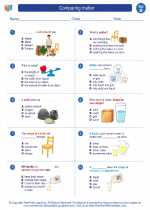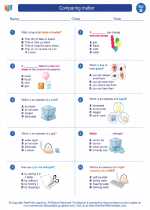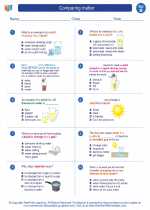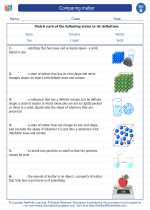Planetary Phenomena
Planetary phenomena refer to the observable events and occurrences that take place in the solar system and beyond. These events include the movements of planets, moons, comets, and asteroids, as well as phenomena such as eclipses, meteor showers, and planetary alignments. Understanding these phenomena is crucial for gaining insights into the workings of our solar system and the universe at large.
Key Planetary Phenomena
- Planetary Movements
- Lunar Phases
- Solar and Lunar Eclipses
- Planetary Alignments
- Meteor Showers
- Comets and Asteroids
Study Guide
To master the topic of planetary phenomena, it's essential to engage in various activities that promote understanding and retention. Here are some study guide components to help you explore and comprehend planetary phenomena:
- Visual Observations
- Observe the moon's phases over a month, noting the changes in its appearance.
- Watch videos or simulations of planetary movements and celestial events to visualize these phenomena.
- Reading and Research
- Read about famous comets, asteroids, and their impacts on Earth and other celestial bodies.
- Explore the historical significance of solar and lunar eclipses in different cultures and civilizations.
- Hands-on Activities
- Create a model of the solar system, illustrating the orbits and relative sizes of planets.
- Conduct experiments to understand the effects of light and shadow, simulating eclipses and planetary alignments.
- Educational Resources
- Utilize educational websites, books, and documentaries to deepen your understanding of planetary phenomena.
- Engage with interactive learning tools and apps that simulate celestial events and planetary movements.
- Collaboration and Discussion
- Participate in group discussions or forums to share insights and learn from others interested in planetary phenomena.
- Collaborate with classmates on projects related to celestial events and their scientific significance.
◂Science Worksheets and Study Guides Second Grade. Comparing matter
Study Guide Comparing matter
Comparing matter  Activity Lesson
Activity Lesson Matter All Around
Matter All Around  Worksheet/Answer key
Worksheet/Answer key Comparing matter
Comparing matter  Worksheet/Answer key
Worksheet/Answer key Comparing matter
Comparing matter  Worksheet/Answer key
Worksheet/Answer key Comparing matter
Comparing matter  Vocabulary/Answer key
Vocabulary/Answer key Comparing matter
Comparing matter 

 Activity Lesson
Activity Lesson
 Worksheet/Answer key
Worksheet/Answer key
 Worksheet/Answer key
Worksheet/Answer key
 Worksheet/Answer key
Worksheet/Answer key
 Vocabulary/Answer key
Vocabulary/Answer key

The resources above cover the following skills:
PHYSICAL SCIENCE (NGSS)
Matter and its Interactions
Students who demonstrate understanding can:
Construct an argument with evidence that some changes caused by heating or cooling can be reversed and some cannot.